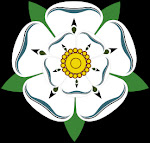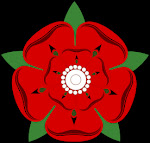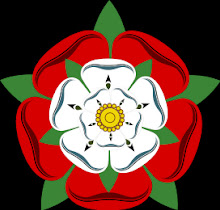Today, we find paints called tempera, or poster paints, on art store shelves quite commonly. This tempera vulgaris is decidedly not the same as classical tempera, which we will be using here; it is more like bodycolor, or gouache, which is essentially watercolor mixed with a substance such as chalk or diatomaceous earth to make it opaque. This common tempera, found frequently in elementary school art classes, is far enough away from classical tempera that it's a toll call.
Indeed, when speaking of classical tempera we usually say egg tempera. The word tempera itself, according to author Ian Sidaway in the highly commendable reference book Everything You Ever Wanted To Know About Art Materials, (a link to this exists on our references list to Amazon so you can buy it) is:
...the word given to the technique whereby pigment is prepared for painting, or "tempered" by mixing with egg yolk and distilled water.
Anyone who's ever tried to clean dried egg yolk off anything knows full well what a durable and sticky emulsion this can be. Tempera gives a thin, hard layer of color that is very durable but is not very flexible; typically period artists painted on a rigid surface, such as wooden panels.
A Bit Of Media History
Tempera was the dominant art medium since the decline of encaustic, which apparently happened around the same time as the fall of the Roman empire (about the 3rd Century AD) and held sway until the development of traditional oil paint in the 15th Century (Vasari seems to credit Jan Van Eyck with discovering it; certainly it seems that he at the very least rediscovered and perfected it). All easel painting done before then was done in egg-based tempera, including all the great and well-known masters of the time.
Making Tempera
While egg tempera is available in tubes pre-made, in order to copy the experience of our medieval cousins as closely as possible, we will be making our own. The general look to be as follows (llustrations excerpted from Sidaway's book):
A basic recipe for tempera emulsion that we might concievably use is as follows:
- 3 parts egg yolk
- 3 parts distilled water
- 1 part linseed oil
Add the linseed oil to the egg yolk a drop at a time, using an eyedropper, and stirring all the time. Once mixed, add the distilled water in the same way, stirring gently until throughly mixed.
A pertinent question here is how much egg to use. One of the points that all the references we've seen make repeatedly is that mixed tempera does not really keep well, or if does is more trouble that it's worth to do, so the recommended amount to make is what one will need at a single session. Sidaway suggests one egg should do the trick, so according to the above recipe, if we'd use one egg yolk, we'd use an equal volume of distilled water, and 1/3rd of that of linseed oil.
Purists hold that to stay to the true one must limit themselves to only yolk and water, but experimentation down the years has proven that the addition of ingredients such as linseed oil, "stand oil" (linseed oil that has been heat treated to polymerize the oil molecules) or varnish can give benefits such as improved workability, flow, or slow drying. During a recent Google search, we were able to find out a small handful of different recipes, so with experience and experimentation, artists can be pretty sure to find an emulsion recipe that works for them.
Care must also be taken in the tools used to prepare the emulsion and keep the chances of contamination at thier minimum. Glass and ceramic vessels are recommended; tools and hands must be scrupulously clean, and metal tools are not recommended for mixing the emulsion.
Preparing the Yolk
Preparing the yolk for use is a simple process but likely not many have been exposed to it. We ourselves recall our mother separating yolk from white by cracking the egg and tipping the contents between the two shell halves. This stage of the process is quite similar.
Once cracked, pour the contents into clean hands. Roll the egg's contents from hand to hand. As you do so, the white will drain off (presumably you have a receptacle under your hands at this point), leaving you in short order with the yolk, alone. Dry this yolk by either rolling it around on your hand, or carefully rolling it onto a paper towel.
At this point comes the time to drain the yolk from its natural container. Hold the yolk carefully by its sac (this is why you want to use absolutely the freshest eggs you can find; not only are fresh eggs more workable, but the yolk sac is strongest when the egg is fresh), puncture it with a scalpel or a craft knife, and drain the contents into a glass jar or dish.
Follow the instructions on whatever recipe you're using to mix in distilled water and whatever oil or varnish you'll be using, and your emulsion will be ready for the pigment.
Preparing the Pigment
Dry pigments are sold as finely ground powders, but a common approach to improve the properties of the resulting tempera is to grind them with a small amount of distilled water to produce a creamy paste.
The paste is ground on a ground glass plate using a ground glass muller, then adding to the emulsion a little at a time.
Once the pigment is successfully mixed with the emulsion, the tempera is ready for use.
By way of final observations, we are still researching exactly how one would go forward from using the mixed tempera. From what we've seen, a little goes a long way, and some colors can be preground and kept for a while, while others should only be mixed on the palette at the time of use. Different recipes require different strategies for storage, and some colors are more powerful than others meaning you'll use more of some pigments and less of others.
Along the way, we've found some interesting web-based references. Check our list of links in the sidebar, and following this is a list of references we've consulted while putting this article together.
Reference Links:
- Society of Tempera Painters on making tempera
- Watercolorpainting.com's tempera reference
- Daniel Smith's tempera making page (includes valuable information on how the dry pigments behave)
- Some Tempera History (Brandywine Museum Article)
- More Tempera History (Courtesy VanAken Artist Colors)
- Scribal Writes #7, Article on Making Tempera
Tags: tempera, making tempera, tempera painting
Powered by Qumana











No comments:
Post a Comment